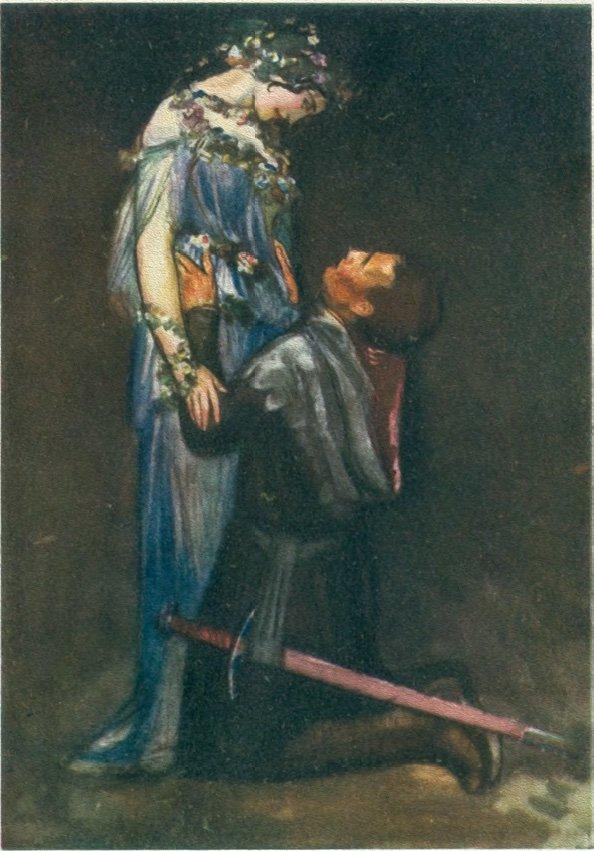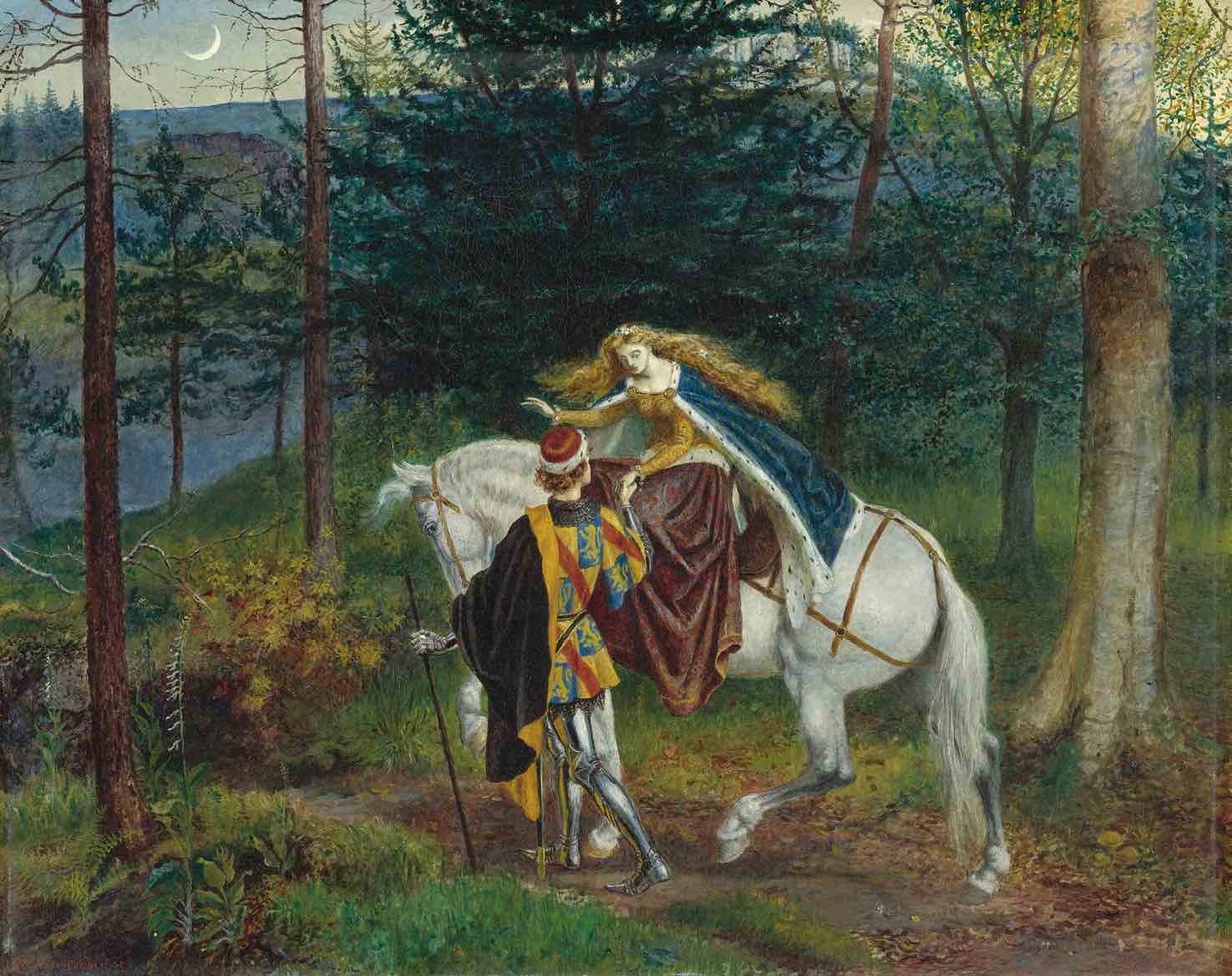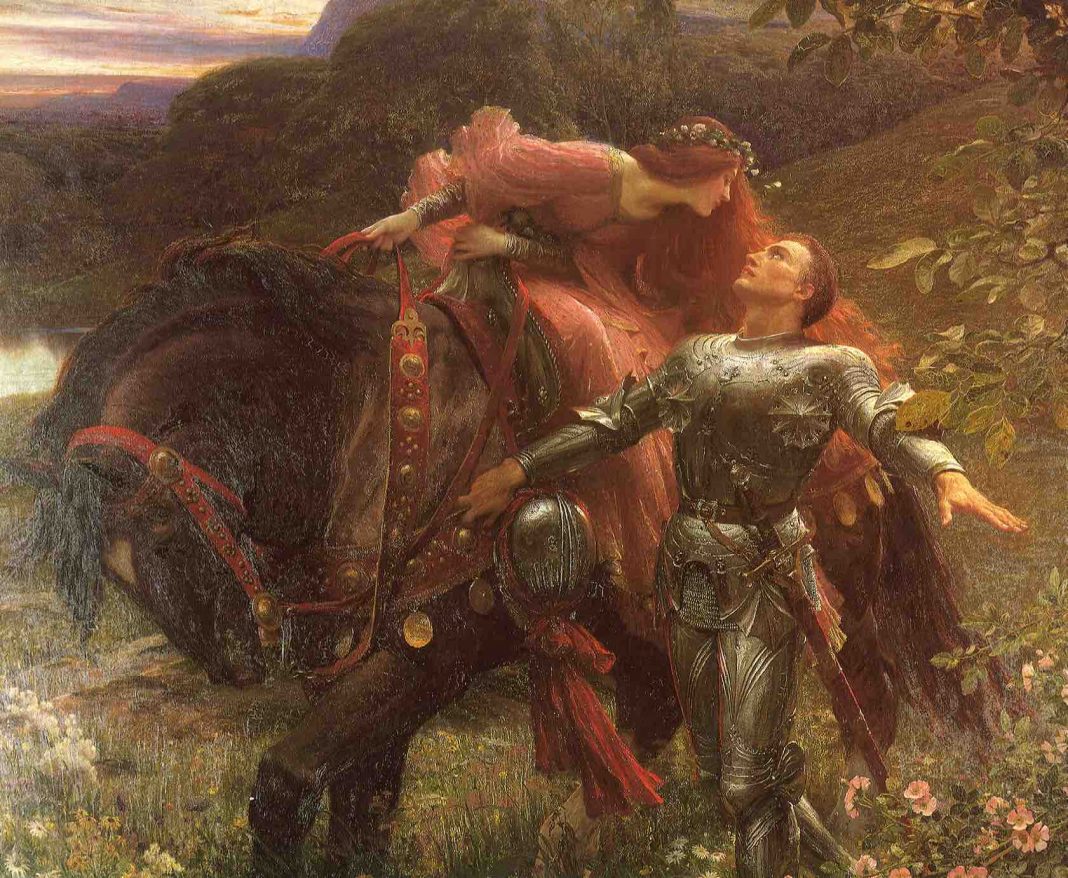In my youth, many a story of rip-roaring adventure, thrills, unbelievable coincidences, and misplaced shoes often began with the following exchange:
“What happened to you last night? You look wrecked!”
“My friend, you would not believe me if I told you …”
Thence would begin a tale of misadventure involving low-priced cider, dubious takeaway food, and probably a National Trust car park before going back to someone’s unpleasant flat and then never seeing them again. Mercifully, most of us seem to have survived these encounters, cured by nothing more than a couple of aspirin and a very hot shower, but we all know how unwise these escapades are. Of course, none of that knowledge stops us repeating it all next Friday night, as Katy Perry would attest. Who knew that in cataloging possibly one of the most chaotic pre-weekend booze-and-bad-behavior binges, Ms. Perry was merely emulating the cautionary tale of a knight on the town involving a faerie, some bad choices, and an elven grot?
Foreshadowing all of this TGI modern malarkey is, of course, John Keats’s beautifully enthralling poem “La Belle Dame Sans Merci,” which is about just such a life-changing, health-endangering encounter with a magical one-night stand. For the Victorians, this poem from 1819 sparked something in them that was both seductive and deeply troubling. Keats, a Romantic poet, found a very willing audience in the Pre-Raphaelite Brotherhood (formed thirty years after the publication of “La Belle Dame”), and subsequent painters and illustrators found resonance in his work. Something about his wholesome, noble knight being led astray by a mystical lass struck a chord or possibly gave them something to aspire to, as they dreamed of being ruined in a similarly romantic manner.
Our story begins with the romantically phrased question, “O what can ail thee, knight-at-arms, / Alone and palely loitering?” When Keats redrafted the poem in 1820, he changed “knight-at-arms” to “wretched wight,” a slightly more puzzling phrase, bringing to mind something pale and wraithlike. However, it’s the 1819 version that gave illustrators the idea that the life-altering encounter was had by a knight, with all its noble and holy connotations, clad in shining armor or shimmering chainmail. From the opening description, we are told that the unlucky knight is haggard and gaunt, feverish and worryingly close to death. Blimey, exactly what did he get up to last night?
The knight launches into his story without any messing about. It begins the moment he met a woman—and not just any woman but “a faery’s child.” She has three aspects that draw him in—long hair, wild eyes, and light feet. Had I known this was what it took to attract men, my teen years would have been spent emulating Kate Bush in her “Wuthering Heights” video. Indeed, in John William Waterhouse’s 1893 painting of the meeting, the purple-dressed girl lassoes her knight with her hair, snaring him with her attractions, and bringing him down to her level, completely defenseless, despite his armor and sword. In Robert Anning Bell’s 1907 illustration for the poem in Palgrave’s Golden Treasury (right), our knight is on his knees, his sword hanging awkwardly and uselessly by his side as he holds onto the flower-clad vision of loveliness. This fighting man never trained for such an opponent as this, and you know things are not going to end well.
Many painters focus on the moment that the knight lifts the girl onto his horse. Even if all were not lost before, the moment she’s on your horse, it really is all over. In possibly the most dramatic and beautiful of all the depictions, Frank Dicksee shows us a knight paralyzed by the sight of the girl on his horse, his arms thrown out to steady himself as if struck. Even his enormous black charger seems to bow its head in submission. It’s no coincidence that the red bridle that harnesses the horse is a similar color to the red dress and hair of the girl who is harnessing the bold knight. Walter Crane shows an equally besotted knight, beguiled by his horse-riding love and being taken off to who knows where, while the horse gives him definite side-eye. Similarly, Arthur Hughes has an undated painting of a love-struck knight gazing helplessly at an impossibly bending girl who curves, serpent-like, to hypnotize him. His horse looks down in despair. That horse knows something’s up. Like your sober best friend on a wild night out, he knows he’s going to have to carry your sorry wreckage back from somewhere, for absolutely no thanks whatsoever.

That horse is not wrong, because after pausing for a quick snack on “roots of relish sweet” together with honey and manna-dew, she whisks him off to her “elfin grot.” It’s a tribute to how alluring our faery child is that with only one murmur of “I love thee true,” she can entice this young man off to somewhere with the word grot in its name. In artists’ renderings, we don’t tend to see her “grot,” if you excuse the expression, but Anning Bell comes through for us again in an 1897 G. Bell & Sons edition of Keats’s poems. After returning to the grot and getting up to some shenanigans that involved him kissing her eyes while she cries, they both fall into a slumber on her mossy floor. There are so many red flags in this encounter, I don’t know where to start, but, moving on, here is where we come to the drama of the piece. Anning Bell illustrated the verses with the slumbering knight clutching to our Belle Dame’s bosom in a cave when all of a sudden, in his dream, figures gesture from the walls in horrific sympathy: “I saw pale knights, and princes too, / Pale warriors, death-pale were they all; / Who cried—‘La belle Dame sans merci / Hath thee in thrall!’ ” It’s not that I’m not grateful for the heads-up or anything, but that is the equivalent of someone leaning in after you have drunk your second pint of sherry and murmuring, “Now, that wasn’t a wise move, was it?” Not helpful, Pale Warriors, not helpful at all.
The horrific realization that his lovely faery girl is a mystical Bluebeard who definitely has a type seems to propel our lovelorn knight back to the reality of a cold hillside and a future of palely loitering. He abruptly finishes his sorry tale with an acknowledgment that everything is rubbish now, and it will be forever winter in his heart, but what has happened and why does he take it so badly? Why did all this strike such a chord with the Victorians?
The Victorians loved a femme fatale, and their art is littered with them, all pouting and alluring. The Pre-Raphaelite depictions of La Belle Dame with her loose hair fit nicely into a genre of pictures containing women such as Dante Gabriel Rossetti’s Lady Lilith (1866-8) and Frederick Sandys’s Medea (1868). These are seemingly gorgeous women, but they have an ax to grind, and becoming entangled with them will be very detrimental to your well-being. Beautiful sorceresses and ice-cold demon women were happily hung on the walls of successful businessmen’s homes possibly for the same reason that “La Belle Dame Sans Merci” rang such a bell with them: It is the tale of a powerful, complacent man not seeing a hidden danger.
At the root of the poem, a reader can see a man who has been successful and brave, fought in many battles, and overcome many foes. But the thing that will destroy him is a small faery girl, a little wisp who barely talks and seems harmless. Figuratively hung on her wall are the heads of many such men—kings, princes, and knights—all men who had power in the male sphere and thought that was enough. In the unknown, faery female sphere, that power means nothing, and capturing you is as easy as picking a flower. Possibly the paintings were there to show how close, how unseen, that danger was, and maybe some men bought those images to remind themselves that risking everything for a pretty face is definitely not worth it. Maybe some even looked on the paintings and thought, “Look at that idiot, falling for that! I’d never be such fool…” while idly musing on a card game they had planned, that nice bottle of Scotch that waited in their study, or a mistress—as William Holman Hunt immortalized it in his painting The Awakening Conscience (1853).
Another reading of the poem is that the Belle Dame is not only a woman; she represents all the seemingly innocent choices or at least apparently harmless vices that have the potential to ruin you. I am reminded of the Victorian love of images of flamboyant English Civil War soldiers who are corrupted by cards, drink, and love. I am reminded of William Shakespeare Burton’s The Wounded Cavalier (1855), a Pre-Raphaelite painting of a gloriously beautiful young man dying in a woodland after being stabbed over a card game. As if to hammer home the point, the cards that are scattered by his picturesquely dying figure are hearts. When your poor life choices are done, the Victorians are reminded, you are left dying in the wilderness, listening to the silence of no birds singing.

Hang on, though, just one minute. Let’s just remember that this is a story being told by a ruined man. These women in the illustrations and paintings are undoubtedly beautiful, so we quite understand why our young man is tempted away, but the Pre-Raphaelites were interpreting this poem during a period of spectacular patriarchal dominance, where men were creating empires, making scientific leaps, and conquering the land and sea at an unprecedented rate. Why on earth would they be shaken by a little, wild-haired faerie girl? The answer is manifold, starting with the female path to suffrage. During the 19th century, women were starting to call upon men to give them equality. The fear this seemingly engendered in men spilled out as an entire genre of machinating temptresses after your power and essential manly juices, lying in wait to bring you low. The more beautiful the woman, the greater the fear, and the fairer sex stopped being the “Angel of the House” (as poet Coventry Patmore patronizingly christened the perfect wife) and started being potential Salomes, Delilahs, and Judiths, just looking for an opportunity to lop bits of you off when you least expected it. The Belle Dame of Keats’s poem and the Pre-Raphaelite works is less obviously sexy in that way, but her loose hair signaled her potentially loose morals, and her bohemian, otherworldly glamour should be enough to warn you that this girl is, as my Grandma would say, not better than she ought to be.
What is it, though, that the Belle Dame does that is so awful? As a knight, the teller of this sad tale has presumably spent his victorious career conquering other equally ambitious men in an all-male environment. The kings and princes who bewail their commonly shared fate from his fever dreams all come from a background of patriarchy, of male rule and dominance. The fact that a woman has destroyed this noble institution should be a warning not to allow women to get beyond themselves with all that equal voting rights nonsense. Look at the damage they do to great, powerful men! No, suffragettes, we are not letting you ruin a perfectly good patriarchy, thank you very much. When all the men cry that the beautiful, merciless woman has them hooked but won’t give them what they want, I am reminded of the girls in Christina Rossetti’s poem “Goblin Market” who become addicted to the Goblin’s forbidden fruit. However, Rossetti is a little wiser than her fellow Pre-Raphaelites. She blames the Goblins and not the fruit for the addiction and destruction of the girls who taste it. In other words, if we read the poem and its associated paintings as a man destroyed by the desire for a woman who is alluring and magical, maybe we should be addressing the society that makes women (and faeries) responsible for our bad decisions rather than taking responsibility ourselves and not fetishizing the unknown and desirable in the first place. Blame the goblins, not the fruit.
The message to take from this is not to blame faeries or women for your prejudices and poor behavior. Honestly, I’m sorry that the knight is just sitting on a hill at the end, feeling sorry for himself, but it’s not like he didn’t have red flags popping up when he met the wild-eyed faery child who didn’t speak. His underestimation of the poor women and mystical folk is what gets him into trouble and leaves him questioning his worldview. If La Belle Dame tells us anything, it is that if you are planning to take advantage of someone and she looks fae, just walk away. The moral could also very well be this: If your horse looks dubious, it’s probably a bad idea.


































